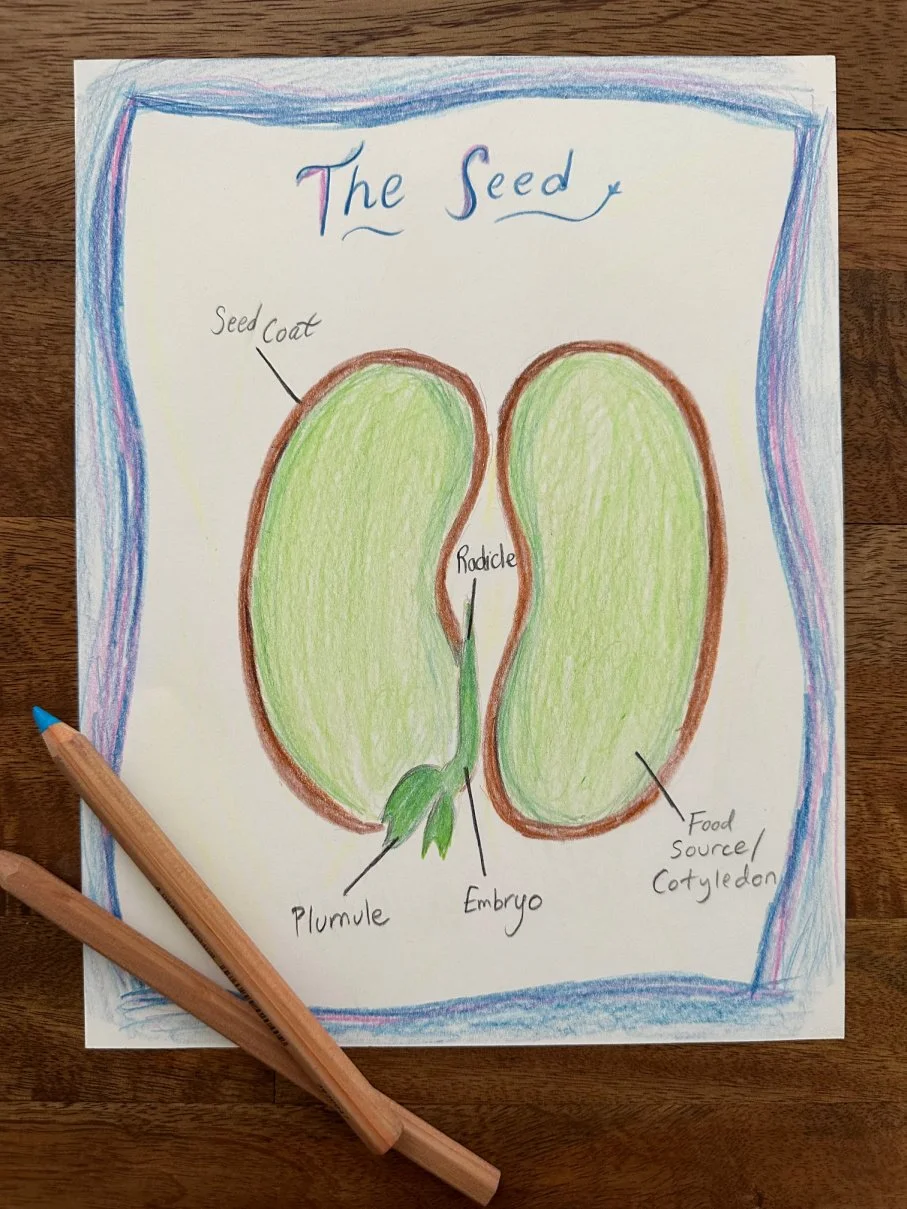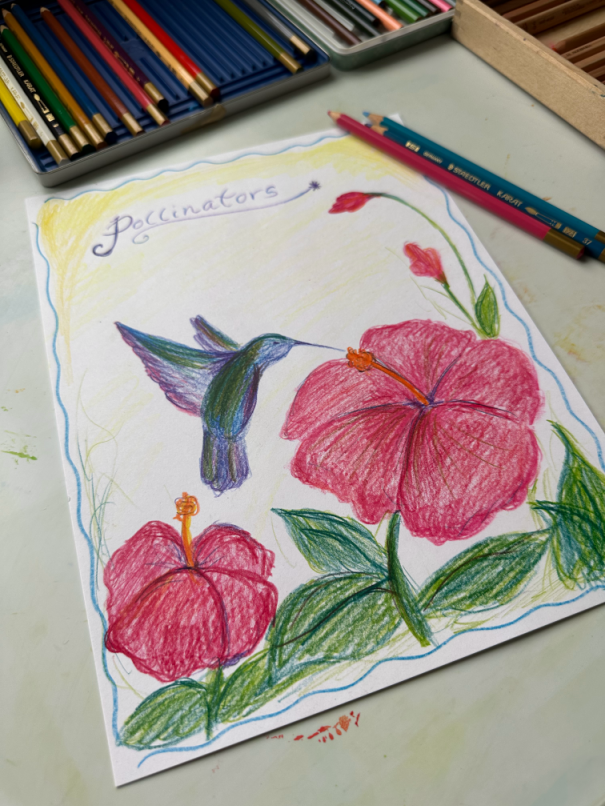Is Waldorf Botany Academic as Well as Artistic?
Q: Is the Waldorf Botany curriculum academic?
(This post is part of a series in which we answer the most common questions we receive in our inbox re: homeschooling, Waldorf curriculum/pedagogy, and whatever else comes our way! Click here to read more from the series!)
A: A frequent misconception that we run into is that science and art cannot walk hand in hand. However, in Waldorf education, the two meld together to create a curriculum that is beautiful, deep, and academic!
Waldorf botany lessons include art, storytelling, and hands-on learning, all through the lens of scientific exploration.
Botany is usually taught in two separate blocks (to learn more about why, click here!) and each is imbued with scientific study in different ways.
A main lesson book page illustrating the inner structure of a seed- with plenty of color, of course!
The first block explores the “lower plants”- such as lichen, moss, ferns, and algae- and these plants are explored through the use of storytelling and artistic imagery. In this block, the educator is not focusing on the more complex aspects of these plants, but instead painting the picture of how these seemingly ‘simple’ plants live, thrive, and play important roles in the health of our planet.
In the first block, students explore the lower plants through imagery and imagination, while weaving in the science of the plants as well.
For example, the educator may tell the story of algae, while including that algae has no stem or real roots, cannot stand on its own, and provides much of the oxygen for all living things on earth. Through story, the child builds an understanding of algae as a living, beautiful, and essential plant.
The second Botany block, often taught later in the school year, is taught in similar ways to the first, though here, the educator brings in the method of phenomenology. (In short, phenomenology is the process of learning through doing and observation.)
The process of photosynthesis illustrated on a main lesson book page!
As the child has been growing throughout the year, by spring they are typically ready for a more complex curriculum, and ready to see plants in a new way!
Expanding upon the first block’s studies, the more complex plants are now explored: from seeds, to germination, photosynthesis to blossoms, and pollination to seed dispersal, the second block is a robust, more detailed study of the plant world.
The educator still uses art and storytelling (and will throughout eighth grade and beyond!) but they also bring in more opportunities for the student to observe, come to their own conclusions, and explore how plants grow and reproduce in a real way.
For example, learning about seeds will take a variety of forms. The educator may tell the story of the little seed waiting to sprout, and how it holds all the promise of what it will become within- even the smallest seed holds all of the potential to grow into a mighty Sequoia tree- it just needs a bit of help from air, water, and light!
The story of pollinators represented in one drawing- a perfect opportunity for students to combine science and art!
As well, the educator will bring in hands-on demonstrations, such as sprouting seeds on a windowsill, and dissecting a seed to see what’s inside.
What seeds sprout more quickly? Under what conditions? How do the sprouts differ from one type of seed to another? Can we observe the energy reserves of the seed, and what parts will sprout into the first leaf and root once it germinates?
Using this approach, the educator guides the children into seeing the plant in its entirety and its parts; how plants are not only beautiful, but how they function, and how the individual parts of a plant each have essential roles in making the plant whole.
Waldorf Botany curriculum is a wonderful example of how art, storytelling, and science can meld together to become a rich academic learning experience for the child!
Enjoy!
About the Authors
Robyn Beaufoy is Waldorfish’s CEO, and also a course instructor for Simple Season (coming soon!), Waldorf Art for Beginners, and Weekly Art Foundations. You’ll find her intuitive touches and influences throughout everything Waldorfish offers. Robyn has been in the world of education for over 25 years, with an MA in Education and a certification in Waldorf teaching - she also homeschooled both of her children for some of that time. In 2012 Robyn co-founded Waldorfish.com, creating it with the vision of making Waldorf inspired-art and pedagogy more accessible, joyful, and doable for homeschoolers all over the world.
Caitlin Amajor is Waldorfish’s course instructor for Geometry grades 5 & 6, and Botany, as well as our Administrative Assistant. From a young age, Caitlin has been immersed in Waldorf education, attending a Waldorf school from K-8. After receiving a BA in History, Caitlin gained her certification in Waldorf teaching, and spent seven years as a Waldorf class teacher in the upper grades. With a special fondness for watercolor painting and geometry, Caitlin loves bringing Waldorf education to her students all over the world, and seeing their own individuality and style bloom from the curriculum!



